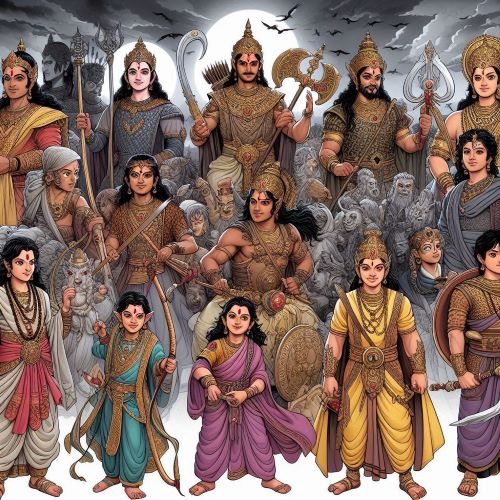The Enigma of Baphomet: History, Meaning & Occult Legacy
When the name Baphomet is spoken today, many envision a horned, goat-headed figure tied to Satanism, dark rites, and occult secrets. But this modern image is only a late invention layered over centuries of shifting myth, political intrigue, and symbolic reinterpretation. In this article, we’ll trace the curious evolution of Baphomet — from medieval accusation to occult archetype — and try to answer: who (or what) was the Baphomet?
Early Mentions: Crusades & Templar Accusations
The name Baphomet first surfaces in medieval documents, centuries before any goat-headed idol imagery. One of the earliest mentions appears in a 1098 letter by Anselm of Ribemont, referencing a term used by Turks during the Siege of Antioch.
However, the more dramatic adoption of Baphomet occurred during the downfall of the Knights Templar in the early 14th century. In 1307, King Philip IV of France arrested the Templars en masse, charging them with heresy, idolatry, and secret pagan worship — among the charges was the worship of an idol called “Baphomet.”
Under torture, some Templars confessed to venerating a bearded head or idol (sometimes called “Baphomet”) during secret ceremonies. But their testimonies were inconsistent and unreliable, leading many modern historians to assume those accusations were politically motivated, part of King Philip’s efforts to eliminate Templar power and seize their wealth.
It’s important to note that the original trial records do not describe a goat-headed demon, horns, pentagrams, or occult symbols. The name was mostly a catch-all for alleged idolatry.
Many scholars believe that Baphomet was a corruption of “Mahomet” (i.e. Muhammad), used pejoratively to suggest that the Templars had adopted Islamic practices — or at least were being accused of heresy tied to “Saracen” influence.
Thus, in the medieval setting, Baphomet was not a fully formed occult figure but a nebulous accusation, used as a rhetorical device in witch-trial style proceedings.
The Occult Reinvention: Éliphas Lévi & Symbolic Baphomet
The leap from a vague Templar accusation to the goat-headed idol known today came in the 19th century. French occultist Éliphas Lévi published Dogme et Rituel de la Haute Magie (1854–56), wherein he introduced his famous illustration of the “Sabbatic Goat”, labeling it “Baphomet.”
Lévi’s Baphomet is a winged humanoid with the head of a goat, female breasts, and a torch between horns. The figure sits cross-legged, one arm pointing up, the other down — symbolizing “as above, so below”. On the figure’s arms, he inscribed the words Solve (dissolve) and Coagula (coagulate), referencing alchemical transformation.
Lévi intended Baphomet as a symbolic synthesis of opposites: male and female, heaven and earth, light and dark. He saw the figure as an allegory of the occult “absolute” — a representation of hidden wisdom and balance, rather than a literal demon.
This rendering had enormous influence. Later occultists and esoteric schools adopted, adapted, or critiqued Lévi’s Baphomet. Over time, that image (or variations) became deeply embedded in Western occult iconography.
Thus, while the modern visual of the goat-headed Baphomet is largely a 19th-century invention, it drew on alchemical, Kabbalistic, and symbolic traditions.
Symbolism, Meaning & Interpretation
Because Baphomet is essentially a symbolic creation, it has accrued many interpretations, sometimes contradictory, depending on the viewpoint.
Balance of Opposites
The composite nature of Baphomet suggests synthesis. The union of male and female traits, the upward and downward gestures, and the integration of beast and human all hint at reconciliation of dualities.
Alchemy, Transformation, Initiation
The words Solve and Coagula, along with the alchemical symbolism (vessel, transformation), tie Baphomet to the idea of inner change. Many occultists view Baphomet as emblematic of the initiate’s path.
Illumination / Knowledge
The torch between the horns is often read as a symbol of enlightenment or the light of reason piercing darkness.
Satanic & Anti-Christian Imagery
In the 20th century, occultism and fringe religious movements, particularly Satanism (especially LaVeyan / symbolic Satanism), adopted Baphomet as a counterpoint to Christian iconography. The Sigil of Baphomet (a goat’s head inscribed in an inverted pentagram) became a hallmark of the Church of Satan.
False Idol vs. Symbolic Archetype
Some look back to the Templar era and regard Baphomet as a fabricated idol — an instrument of political and theological persecution — while occultists and modern esotericists see it as a powerful symbol rather than a literal entity.
Modern Usage & Cultural Impact
Over the past century, the image of Baphomet has seeped into pop culture, media, protests, and art:
Church of Satan & Satanic Temple
The Sigil of Baphomet (the goat’s head in an inverted pentagram) has become an official symbol of many modern Satanic groups.
The Satanic Temple even commissioned a public statue of Baphomet (with children standing beside it) as a statement on religious plurality and freedom in U.S. public spaces.
Art, Literature & Esotericism
Baphomet appears in occult art, novels, comics, video games, and speculative fiction as a motif of rebellion, hidden knowledge, or the uncanny.
Conspiracy & Fringe Theories
Some conspiracy theorists tie Baphomet to secret societies, Illuminati, freemasonry, or satanic conspiracies. These threads often conflate symbolic usage with literal belief, blurring fact and myth.
So… Who Was the Baphomet?
The answer depends on which era you ask about:
In the medieval period, Baphomet was a nebulous name used in prosecutorial rhetoric — not a well-defined being, but an accusation of heresy and idolatry leveled at the Templars.
In the 19th century, Éliphas Lévi reimagined Baphomet as a symbolic, allegorical figure synthesizing opposites and representing occult wisdom.
In modern occultism and countercultural movements, Baphomet is a potent icon of rebellion, transformation, and the exploration of hidden truths — sometimes adopted as a symbol, rarely worshipped as a god in the literal sense.
Thus, Baphomet is less a “who” than a symbolic “what” — a shifting mirror onto human fears, yearnings for hidden knowledge, and controversies about power, faith, and secrecy.
No posts were found.









